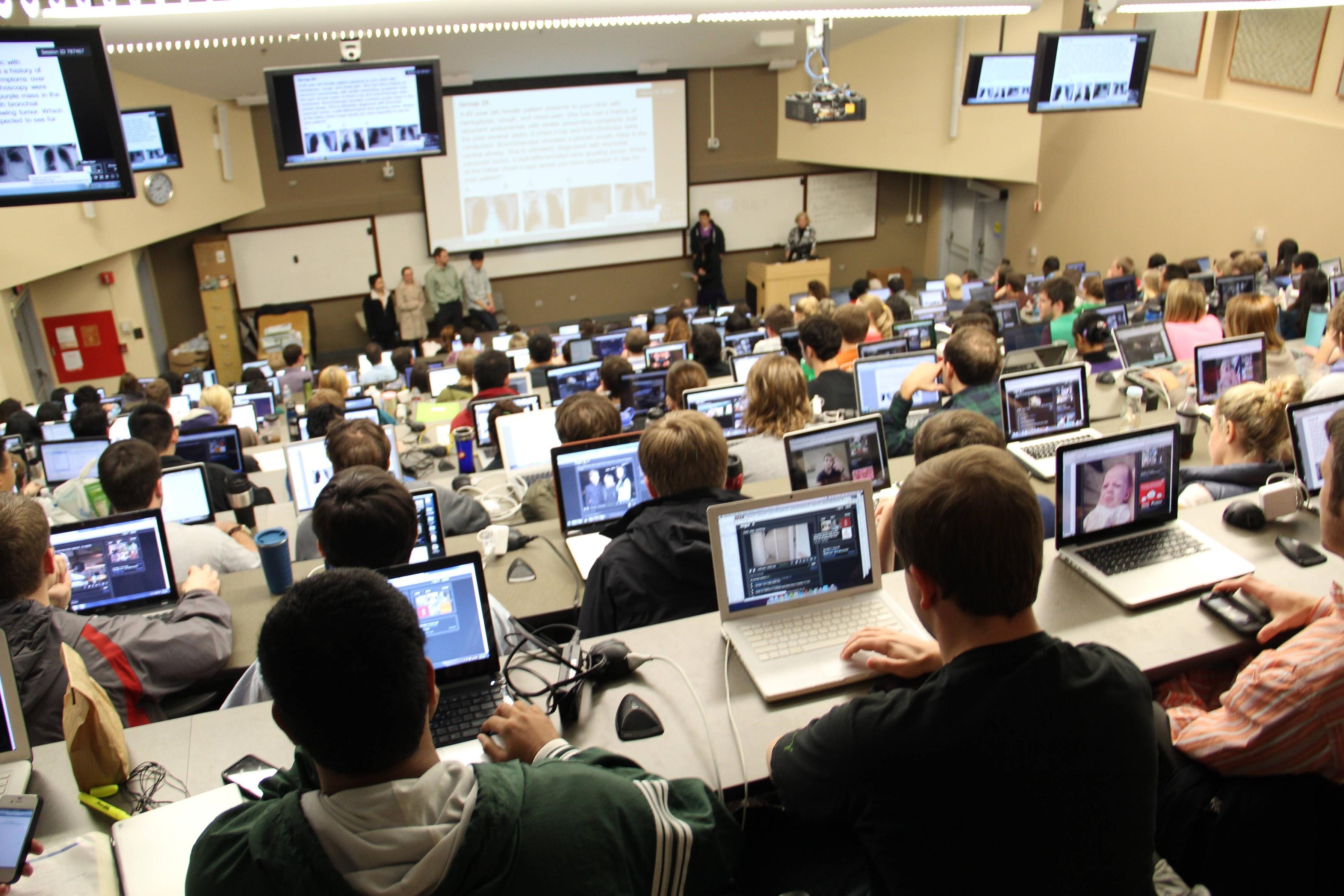When entering their first classes of the semester, students are often apprehensive as they wait to hear the professor’s policy on laptops in class. While insisting on handwritten notes is not the norm at McGill, some professors nonetheless present students with articles and studies that explain how writing notes by hand improves memory, helps with the absorption of information, and is generally the best way to become a successful student.
The campus culture that classifies handwritten notes as ‘best’ or simply ‘better than’ typed notes homogenizes education and labels a student’s learning process as either right or wrong. While taking notes by hand benefits some—possibly even most—students, insisting upon it can create stressful and even inhospitable learning environments.
Despite its alleged positive impact on memory, handwriting notes lacks the accessibility of computers. While professors make exceptions for students with learning and physical disabilities, simply having messy or slow handwriting can disadvantage a student in the classroom. For those accustomed to typing their notes, taking notes by hand can be a grueling process that actually inhibits the absorption of information. Given that today’s students type much faster than they can write, handwritten notes often devolve into a game of catch-up with the professor: If students have to put most of their focus towards maintaining the professor’s speed, simply writing the words down takes priority over what the professor is actually saying.
These frantic notes may be messy, disorganized, and barely-legible, whereas computer programs such as Onenote or Evernote can be extremely useful in organizing important subjects and trains-of-thought. A student struggling to keep up with the professor likely doesn’t have the time to even write legibly, let alone highlight information. This chaotic transcription of a lecture can ultimately leave a student feeling stressed or disoriented, neither of which are optimal mental states for retaining course material. In an attempt to limit distractions and help students succeed, a professor may not realize the alternatively detrimental learning environment that insistence on handwritten notes creates.
Typing notes on a computer is admittedly not without its faults. Considering students’ constant exposure to the internet, allowing laptops in class inevitably opens those students up to an infinite number of distractions. These tend to have a snowball effect, in that someone surfing Facebook can distract the person behind them, and so on and so forth.
However, this possibility of distraction does not necessarily warrant a laptop ban, especially when one considers how teaching methods have evolved to incorporate, and even benefit from, digital media. Learning is not confined to spoken lectures; instead, professors employ a variety of digital aids such as powerpoints, music, videos, and images to augment their lessons. This shift towards a digital classroom recognizes that students learn in a variety of ways. For example, a visual learner retains information better with images or other visual cues. Likewise, an aural learner benefits from the presence and assistance of music or other sounds. These different learning methods intersect and overlap, making it impossible to suggest one student learns better than another.
Learning is a highly individual process. Just as the mode of presentation affects how a student absorbs information, so does the way a student takes notes. If it is agreed upon that the diversification of teaching styles should be encouraged, then it is equally important to allow for diversity in note-taking. Just because a student takes notes on a computer does not make him or her a poor or ineffectual learner. Students should be encouraged and allowed the freedom to discover which learning methods work best for them, rather than adhering to someone else’s definition of ‘proper learning.’









I for one suggest a new phrase, omnigraphorous* learning, to better encompass the multitude of forms now available for note taking and learning. We can take pen or pencil to paper. We can take stylus to tablet or touch screen. We can type on virtual and physical keyboards. We can use voice recognition to dictate text. We can use handwriting recognition engines to turn either paper handwriting (scan and convert) to digital text, or to translate stylus input directly to text. Not to mention the emoji storms now populating modern communication via cellphone and related applications.
Each student will find that various combinations of these tools and methods will serve his or her learning needs at any given time. The key is to help students understand their own learning and communications styles sufficiently, so that they can fluently adapt and use these differing forms of writing and communication.
* omnigraphorous–a newly coined term, for definition see here: http://www.memrystax.com/about.html
Just surprised no one is saying it is racist or classist to have computers when not all can afford them. I actually don’t care, but people point out that having others things when others do not is racist.
One argument that I’d give students for handwriting *if* the University still makes extensive use of hand written exams, is the need to practice writing reasonably legibly at speed. Once most exams allow students to type if they prefer, then that starts to be less of an issue, but certainly in institutions that I know in the UK, handwritten is the norm for end of semester/year exams that are essay / long answer based.